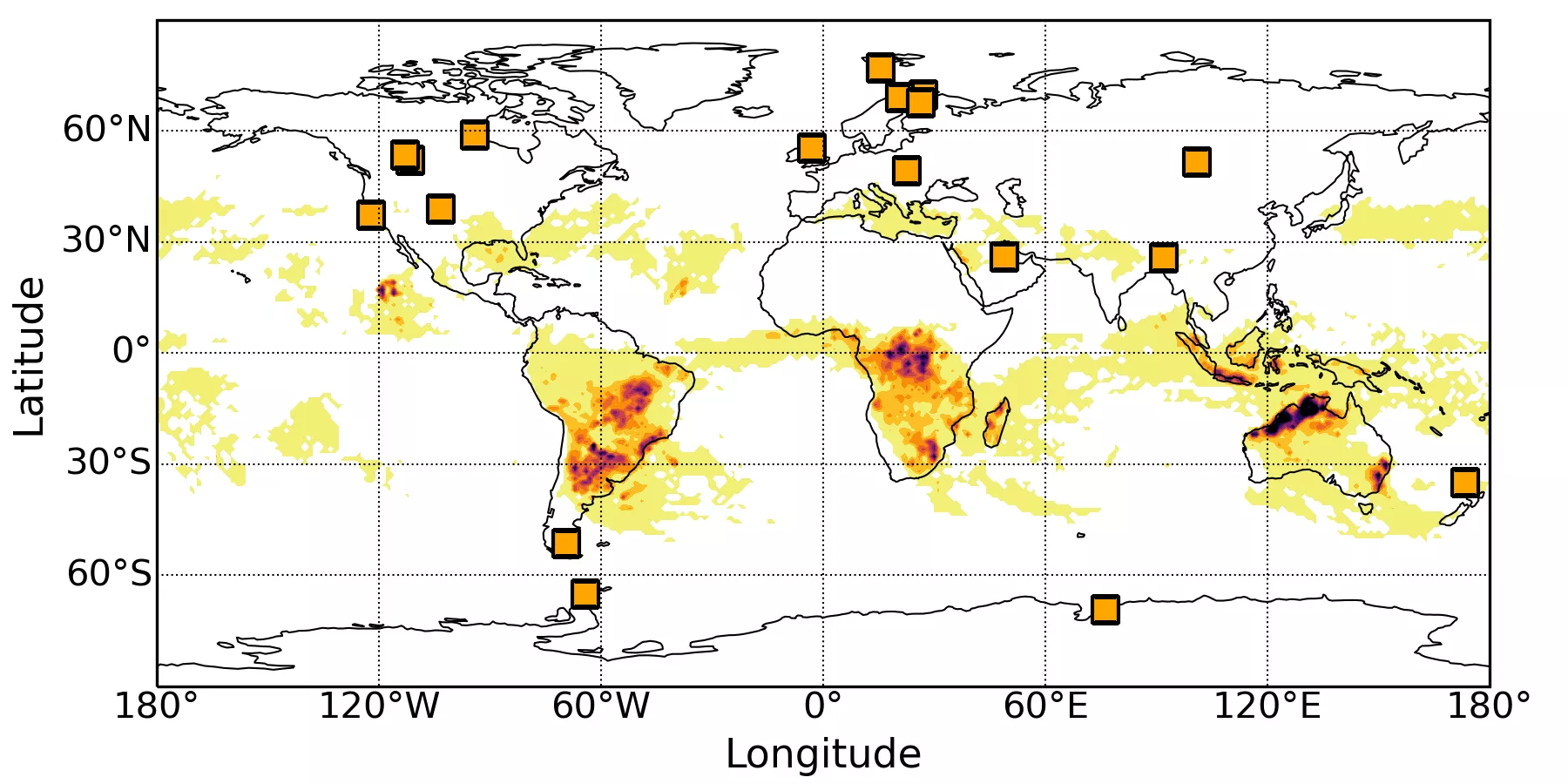Where did the lightning disappear? FI researchers collaborate to investigate daily changes in global lightning activity using a new approach
Researchers at the ELKH Institute of Earth Physics and Space Science (FI), Sopron, in collaboration with researchers from over 10 different countries around the world, are investigating the Earth's lightning activity, which is recognized as an essential climate variable by the World Meteorological Organization (WMO). In a recently published study in the scientific journal Atmospheres of the prestigious Journal of Geophysical Research (JGR) series, the researchers investigated the day-to-day changes in global lightning activity. They developed a novel method to characterize the daily global lightning activity (intensity), based on measuring the extremely low frequency (ELF) radio noise emitted by lightning strokes. The global lightning activity index, derived from data collected by ELF measurement stations at 18 different locations worldwide, was validated using measurements from the best available lightning detection networks with global coverage. During a 19-day test period, they successfully demonstrated that the intensity of global lightning activity can decrease by more than a factor of two within a few days, representing an exceptionally significant change for a global characteristic.
The investigations have shown that this significant global change can be associated with the transport of extremely cold air masses originating from the polar regions towards the Equator. These so-called cold air outbreaks can cause severe economic and societal damages in the mid-latitudes. In areas near the Equator, the study of this phenomenon is of particular importance for the protection of coffee plantations in Brazil. The results of the recently published publication indicate that a cold air outbreak, which initially causes extreme snowstorms in North America, can reach tropical regions within a few days, significantly reducing the number of thunderstorms, for example, in the Amazon basin. As it drifts eastward, it can also impact local weather conditions in Africa.
The results clearly support that the investigation of global lightning activity can significantly contribute to a better understanding of Earth's changing climate. One of the primary objectives of FI researchers is to gain a comprehensive picture of the changes in global lightning activity that have occurred in recent decades using the new method. These processes have been significantly influenced by factors such as the decrease in atmospheric pollution associated with the pandemic. Their work is greatly facilitated by the upcoming visit of Dr. Earle Williams, a highly esteemed international expert in global lightning activity research from the Massachusetts Institute of Technology (MIT), supported by the Hungarian Academy of Sciences (MTA) Distinguished Guest Scientists Fellowship Programme. Professor Williams will work together with Hungarian colleagues for three months in this extremely exciting field.

Map showing the locations of the 18 ELF stations used in the study (marked by orange squares) together with the global distribution of lightning activity in the test period
Publication:
Bozóki, T., Sátori, G., Williams, E., Guha, A., Liu, Y., Steinbach, P., et al. (2023). Day-to-day quantification of changes in global lightning activity based on Schumann resonances. Journal of Geophysical Research: Atmospheres, 128, e2023JD038557. DOI: 10.1029/2023JD038557

